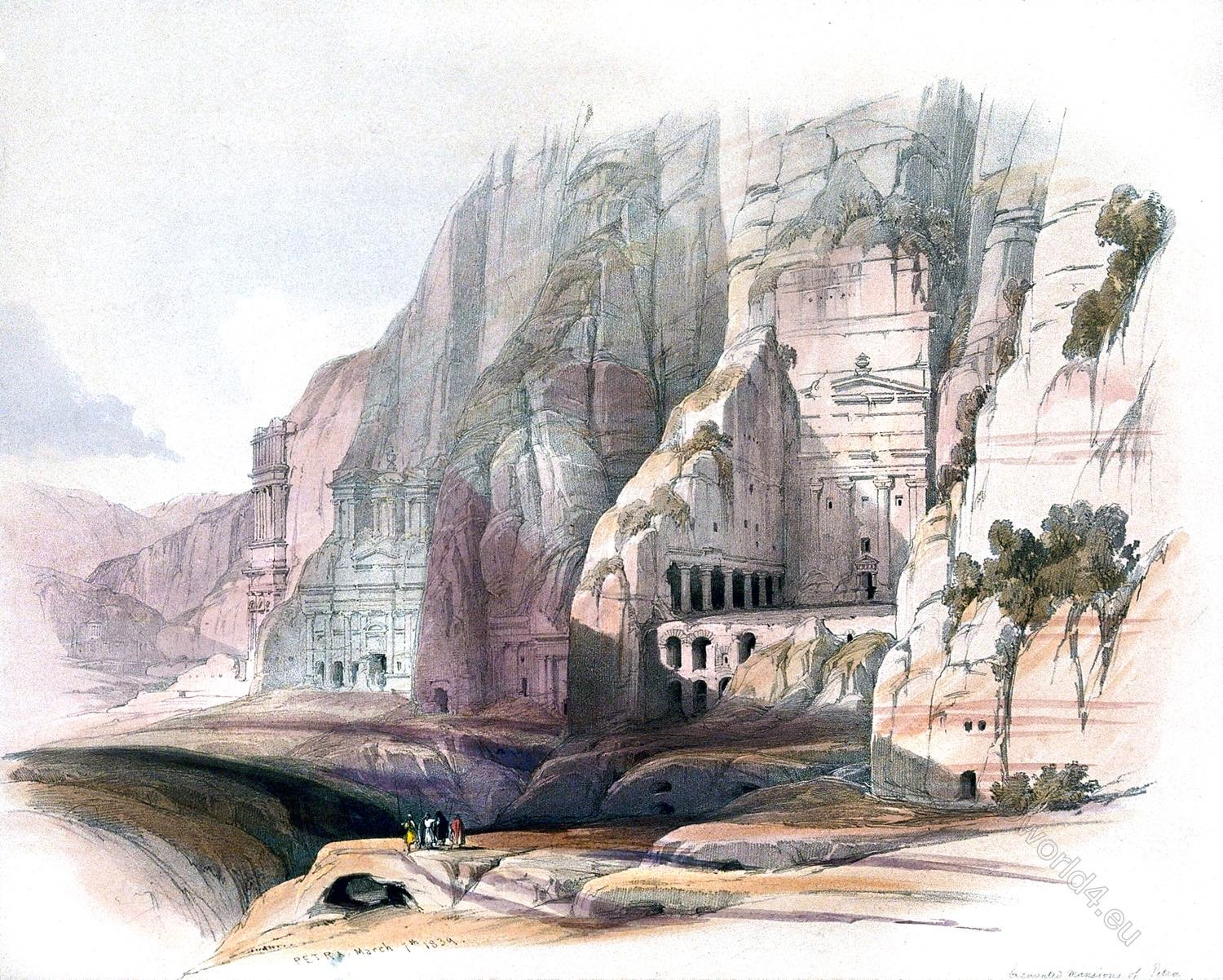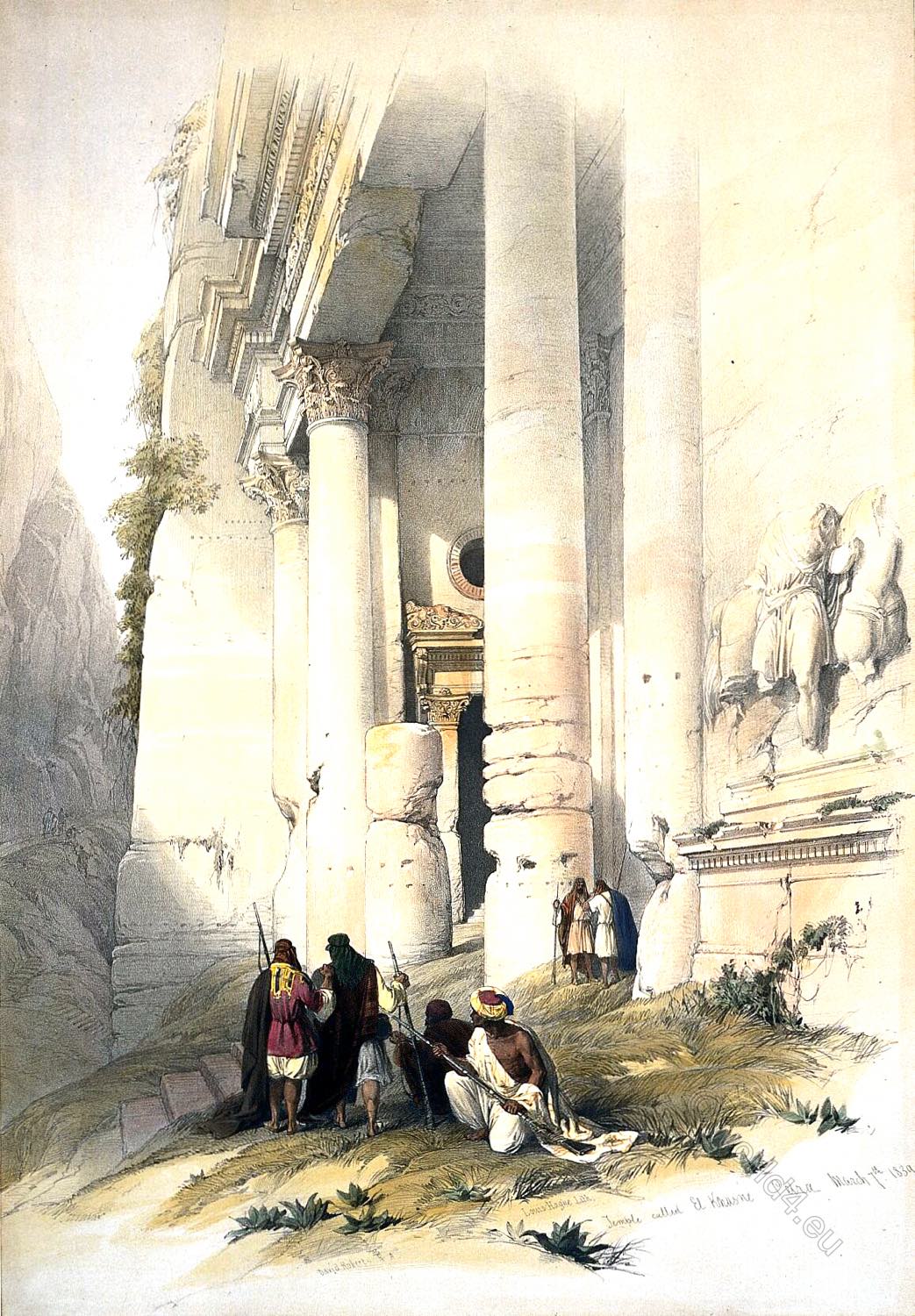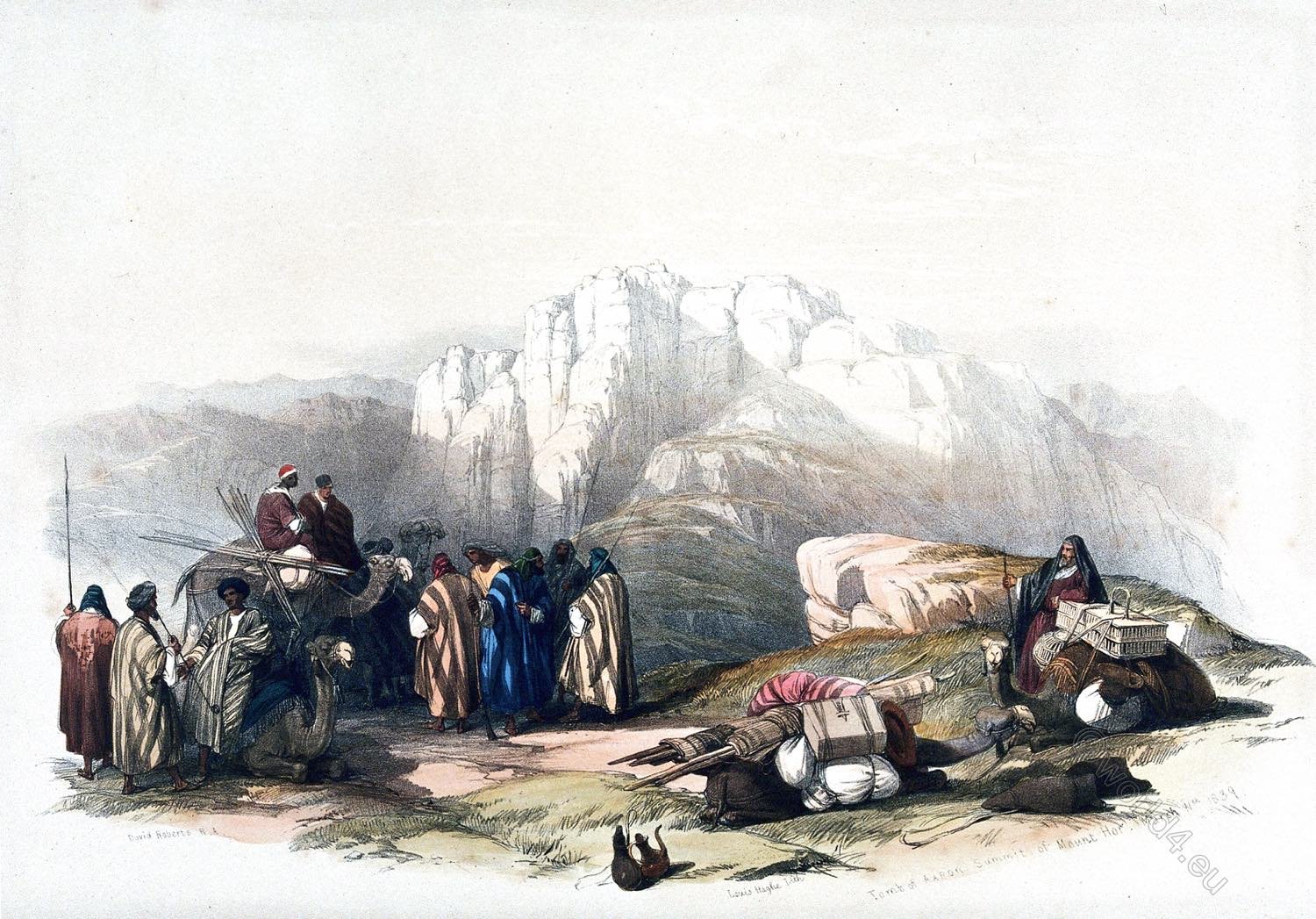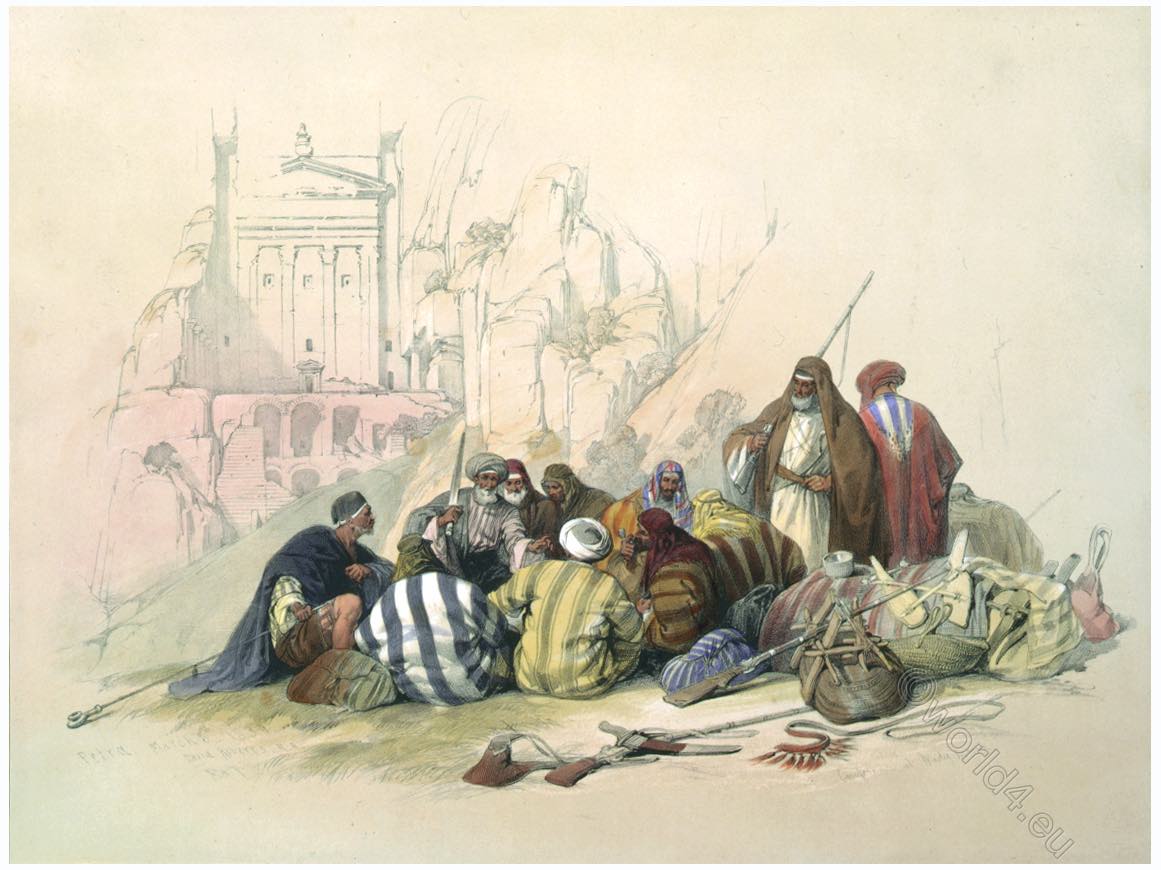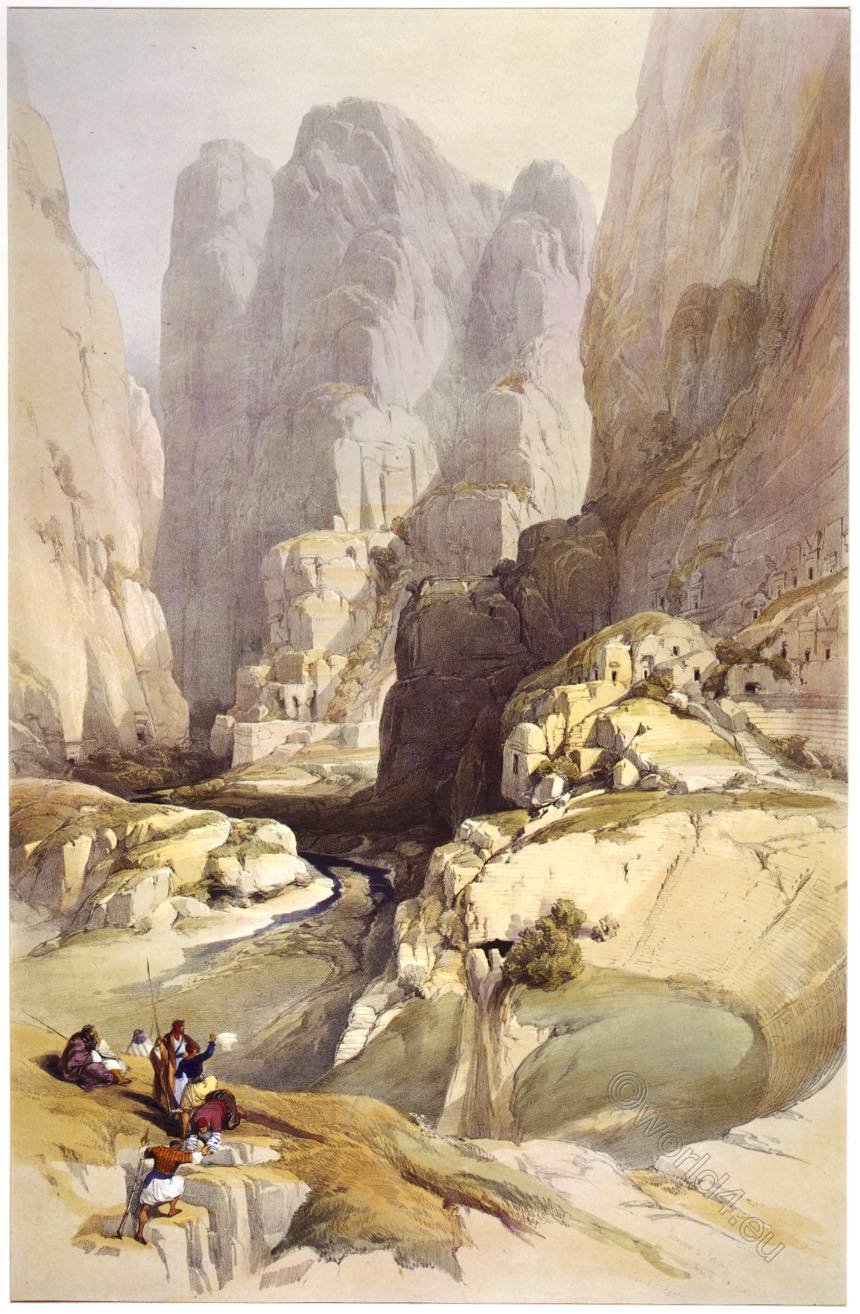
THE THEATRE
by David Roberts.
This view exhibits another of the wonders of Petra. The Stream of Wady Mousa, here turning to the south, enters a ravine gradually narrowing. The cliffs are perforated, as usual, with numberless excavations; but the largest labour of this order, and the one which most directly meets the eye on entering the City from the eastward, is the Theatre.
Its form, parts, and dimensions, are still ascertainable. The diameter of the Podium is 120 feet, 1) the number of rows of seats is 33, and of the Cunei 3; and as the benches are capable of containing about 100 persons each, the entire would thus give room for upwards of 3000. Behind the upper bench runs a narrow corridor.
The Scena was built, and not excavated; the whole, therefore, has fallen. But the bases of four columns remain on its interior face. All the rest was hewn out of the living rock. Above the highest row of the seats are small chambers excavated in the cliff. The Theatre fronts the east-north-east.
From the upper or southern front is obtained, perhaps, the most striking view in the whole valley. The opposite or eastern cliff, as it here skirts the track, is low; while above it, farther back, is another higher precipice, extending towards the north. 2)
The Engraving affords a view of the general height of the cliffs enclosing the Ravine which leads to the City. Its entrance and its termination were alike defended by small fortresses formed in the rock, but now ruined by earthquakes. Immediately facing the Ravine, and on the left of the spectator, is a rock, formerly crowned by a circular Monument, of which but the lower portion remains. 3)

The ancients knew the power of first impression, and in all their cities seem to have studied to render the entrance most impressive. But the site of their City supplied the Petraeans with singular advantages, which they employed to the utmost.
In entering Petra on this side, the eye of the stranger was met by a succession of objects the most novel, bold, and striking. He first saw this Monument, probably a noble tower, suspended above his head.
He next saw the Theatre, an immense work of wealth and labour, which, though now reduced to the simple excavation of the seats, we may justly suppose to have possessed the pillar and the portico, with every decoration which could embellish the most favoured resort of a splendid people.
Above both Monument and Theatre, he followed both excavations of the richest and most fantastic style, ascending to the summit of the cliffs, and those cliffs themselves exhibiting the hues of painted scenery on the most colossal scale.
Even now, in all its desolation, all is beautiful. Nature has hung the rocks with prodigal and glowing vegetation; where the sculptured ornament has mouldered away, the shrub and the flower have partially supplied its loss,—have festooned the cliff, and coloured and tissued the ruin.
1) Irby and Mangles. 2) Biblical Researches, ii. 521. 3) Roberts’s Journal.
Source: The Holy Land, Syria, Idumea, Arabia, Egypt, & Nubia, by David Roberts (British, 1796-1864), George Croly, William Brockedon. London: Lithographed, printed and published by Day & Son, lithographers to the Queen. Cate Street, Lincoln’s Inn Fields, 1855.
Discover more from World4 Costume Culture History
Subscribe to get the latest posts sent to your email.


